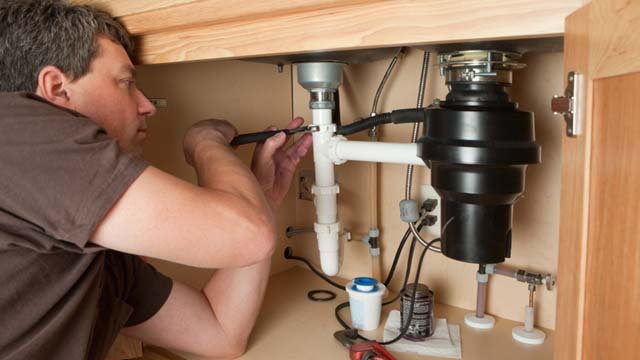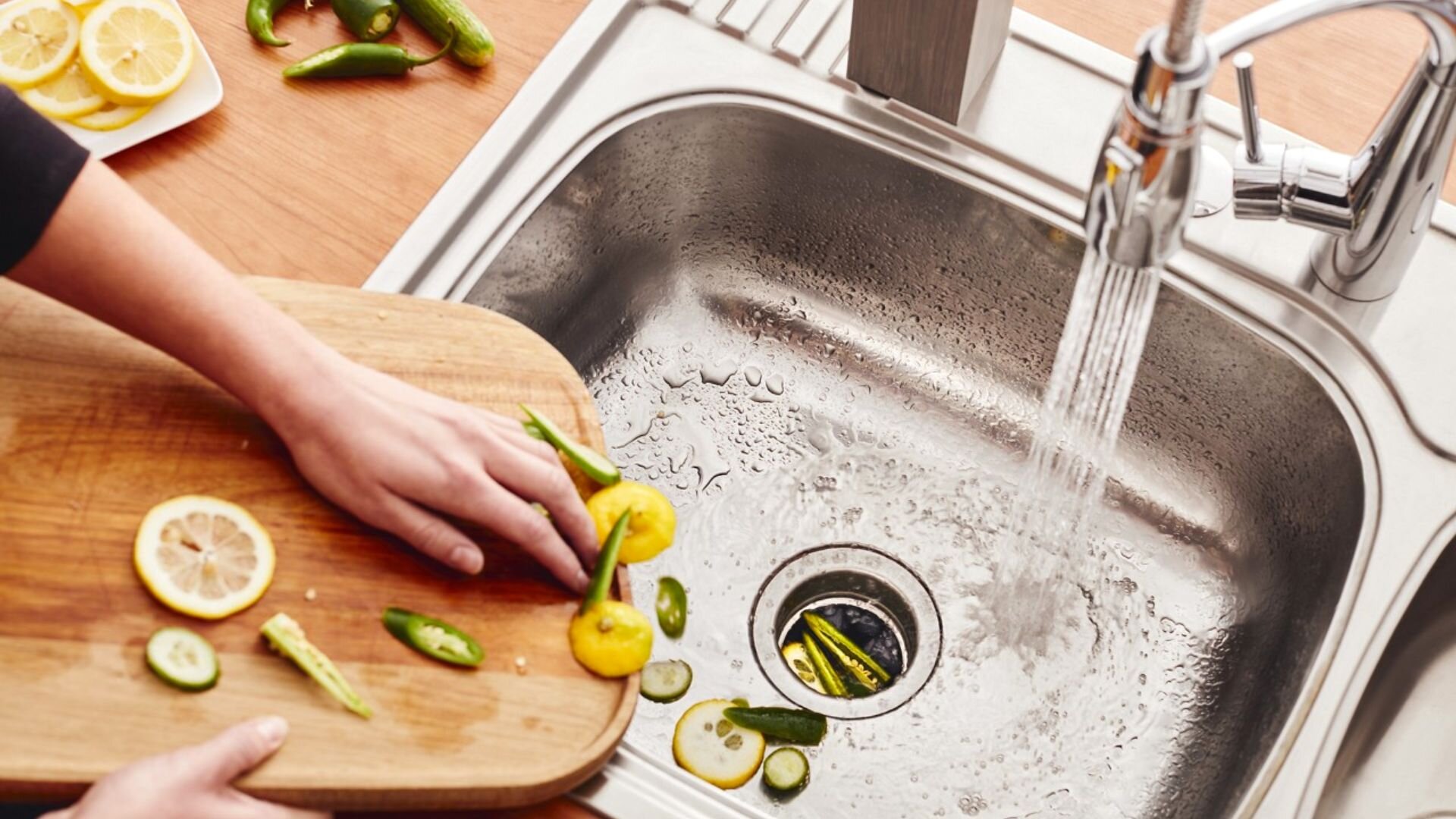Are you hunting for know-how about How to fix a pretty consistent leak from my garbage disposal?

Waste disposal unit are vital cooking area home appliances that aid in throwing away food waste successfully. However, a leaking garbage disposal can be a discouraging and untidy trouble to take care of. Fortunately, lots of leakages can be fixed easily with a couple of simple steps. In this short article, we will certainly review exactly how to take care of a leaking waste disposal unit effectively.
Introduction
Waste disposal unit are mounted under cooking area sinks and are created to shred food waste right into smaller sized pieces, enabling it to go through the pipes system quickly. While these gadgets are typically trustworthy, leakages can happen gradually due to damage, loose connections, or damage to the device.
Usual Sources Of Leakages in Waste Disposals
Worn Seals and Gaskets
Seals and gaskets play a critical role in avoiding water from dripping out of the garbage disposal. Gradually, these elements can weaken, causing leakages around the disposal unit.
Loose Links
The connections between the garbage disposal and the plumbing system can become loose with time, triggering water to leakage out during procedure.
Fractures or Openings in the Disposal Unit
Physical damages to the garbage disposal, such as fractures or openings in the real estate, can additionally cause leakages.
Identifying the Resource of the Leak
Before attempting to deal with a leaking garbage disposal, it is essential to determine the source of the leak. This can commonly be done with aesthetic assessment or by carrying out basic examinations.
Visual Inspection
Evaluate the garbage disposal system very carefully for any type of indications of water leakage. Pay very close attention to areas around seals, gaskets, and connection factors.
Checking for Leaks
One means to examine for leakages is by running water via the disposal unit and looking for any type of noticeable signs of leakage.
Tools and Materials Needed for Dealing With a Leaking Waste Disposal Unit
Prior to starting the repair work procedure, collect the required tools and materials, including a screwdriver, flexible wrench, plumbing professional's putty, replacement seals or gaskets, and epoxy or patching product for repairing splits or holes.
Step-by-Step Overview to Dealing With a Dripping Waste Disposal Unit
Turn Off the Power
Prior to attempting any repairs, ensure that the power to the garbage disposal system is turned off to stop the risk of electric shock.
Situate the Leakage
Recognize the specific place of the leak and identify the reason.
Tighten Connections
Use a wrench to tighten any type of loosened links between the disposal unit and the plumbing system.
Replace Seals or Gaskets
If the leak is due to used seals or gaskets, eliminate the old parts and change them with new ones.
Patching Splits or Holes
For cracks or holes in the disposal system, use epoxy or a suitable patching material to seal the broken area.
Examining the Waste Disposal Unit After Repair Work
When the repair is complete, examine the garbage disposal by running water through it to guarantee that the leakage has been settled.
Preventive Maintenance Tips to Stay Clear Of Future Leakages
To prevent future leaks, it is important to execute routine upkeep on your garbage disposal. This consists of keeping it clean, avoiding placing non-food things or tough things down the disposal, and regularly looking for leaks or other concerns.
Conclusion
To conclude, repairing a leaking waste disposal unit is a fairly uncomplicated procedure that can be finished with fundamental devices and products. By complying with the actions described in this article and practicing precautionary maintenance, you can keep your garbage disposal in good working problem and stay clear of pricey repair services in the future.
What to Do About a Leaking Garbage Disposal
A leaking garbage disposal often goes unnoticed until you confront a sopping cabinet, a foul-smelling puddle, or an audible drip-drip-drip from the unit. The fix can be frustrating, too, because the leak can stem from a number of components in the system. Fortunately, with a little sleuthing, you can zero in on the leak and—depending on the exact location—stop the icky oozing and repair the component that caused it. Worst case scenario, if it turns out that the garbage disposal must be replaced, installing a new one is a reasonable do-it-yourself task for those with basic plumbing skills. Read on to keep the cash you’d otherwise hand over to a pro.
Prepare to find the leak
Prior to testing the garbage disposal for leaks, unplug it at the wall outlet and turn off the power from the breaker box to prevent electrical shock. Then insert a watertight sink stopper into your sink drain and wipe the unit dry with a clean cloth. In any handy container, mix a few drops of food coloring into a few cups of water, and pour the dyed water onto the sink stopper to help you locate the leak.
Investigate the source
the top, where the disposal meets the sink drain the side, where the dishwasher hose or main drain pipe connects to the disposal or the bottom of the unit Inspect each of these locations while gliding a light-colored rag over the unit; the dyed water will readily show on the rag and reveal the location of the leak. If a leak isn’t immediately apparent, remove the sink stopper and pour a few more cups of dyed water down the sink drain, then check for leaks again. Leaks near the top of the unit are more likely to show themselves while the sink is plugged, while side and bottom leaks are more noticeable while the sink is unplugged.
The metal sink flange that sits directly inside the sink drain is typically sealed around the top with plumber’s putty (a clay-like sealant) and then secured from under the sink with bolts. If the plumber’s putty deteriorates, or the bolts loosen, the flange can no longer form a watertight seal between the sink drain and the disposal—which could cause a leak at the top of the unit.
To reseal the leaky flange, you must first detach the garbage disposal. Start by loosening the screws securing the main drain pipe to the disposal, then loosen the screws in the metal clamp securing the dishwasher hose to the disposal and detach the drain pipe and dishwasher hose from the disposal. Loosen the screws in the mounting ring that connects the disposal to the metal mounting assembly beneath the sink, then pull down the disposal and carefully set it on a clean, dry surface. Loosen the bolts in the mounting assembly with a wrench, then pull down the mounting assembly and set it near the disposal.

I hope you liked our topic about Why Is . Thanks a ton for taking time to read through our blog. Please set aside a second to distribute this content if you liked it. Thank-you for taking the time to read it.
Call Today